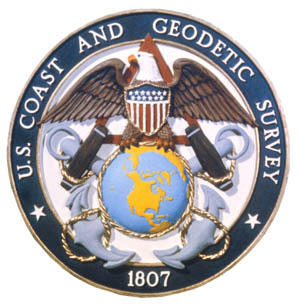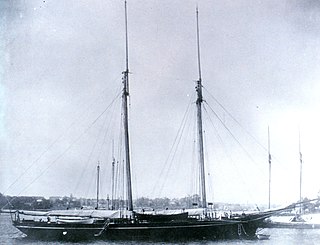Three ships associated with the United States Navy have been named Bache.

The United States Navy (USN) is the naval warfare service branch of the United States Armed Forces and one of the seven uniformed services of the United States. It is the largest and most capable navy in the world and it has been estimated that in terms of tonnage of its active battle fleet alone, it is larger than the next 13 navies combined, which includes 11 U.S. allies or partner nations. with the highest combined battle fleet tonnage and the world's largest aircraft carrier fleet, with eleven in service, and two new carriers under construction. With 319,421 personnel on active duty and 99,616 in the Ready Reserve, the Navy is the third largest of the service branches. It has 282 deployable combat vessels and more than 3,700 operational aircraft as of March 2018, making it the second largest and second most powerful air force in the world.
- USC&GS A. D. Bache (1871), a United States Coast and Geodetic Survey survey ship named for Alexander Dallas Bache, former Superintendent of the Coast Survey, which was assigned to temporary duty with the U.S. Navy between January and June 1898.
- USC&GS A. D. Bache (1901), a United States Coast and Geodetic Survey survey ship named for Alexander Dallas Bache, former Superintendent of the Coast Survey, which served as a patrol vessel in the U.S. Navy from 24 September 1917 to 1 April 1919 and then was returned to the U.S. Coast and Geodetic Survey.
- USS Bache (DD-470), named for Commander George M. Bache, a destroyer in commission from 1942 to 1968.

USC&GS A. D. Bache (1871–1900), the second steamer of the U.S. Coast and Geodetic Survey, was named for the former superintendent Alexander Dallas Bache and launched August 1871 at Wilmington, Delaware.

Alexander Dallas Bache was an American physicist, scientist, and surveyor who erected coastal fortifications and conducted a detailed survey to map the mideastern United States coastline. Originally an army engineer, he later became Superintendent of the U.S. Coast Survey, and built it into the foremost scientific institution in the country before the Civil War.

USC&GS A. D. Bache (1901-1927), often referred to only as Bache, continued the name of the Bache of 1871 and has been confused, including in the Dictionary of American Naval Fighting Ships, with that ship even though an entirely new hull and boiler were built in 1901 and only the name and some machinery and instruments were transferred to the new hull. The Bache of 1901 was transferred to the U.S. Navy for World War I service between 24 September 1917 through 21 June 1919 when she was returned to the Coast and Geodetic Survey.
| This article includes a list of ships with the same or similar names. If an internal link for a specific ship led you here, you may wish to change the link to point directly to the intended ship article, if one exists. |














